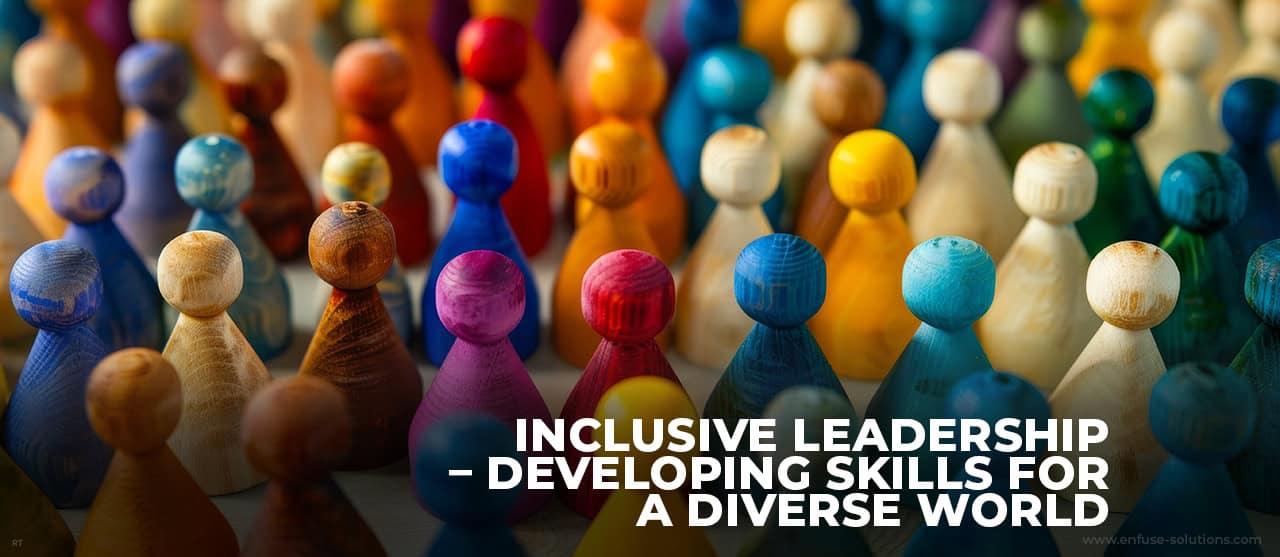
Good leadership can either make or break an organization. The modern workplace is different as multiple generations are working together and finding it hard to find the right fit and balance. Amidst all this, employees and employers are trying to navigate between changing expectations, trends like Quiet Quitting, and many more workplace-related challenges. About 43% of workers stated in an EY survey that they might switch employers in the upcoming year. More than 80 percent of workers believe that reward schemes require adjustments.
The difference in leadership perspectives between employers and employees is another fascinating angle. While over 80% of employers report feeling trusted and empowered by their leaders, only 64% of employees feel this way about their leaders. It is easy to see how the two workplace segments have different visions, thanks to this obvious gap. But how can this disparity be reduced or eliminated? Is leadership and the way workers are handled at work hold the key to the solution?
What Is Inclusive Leadership And How Is It Different From Traditional Leadership?
As per the Harvard Business Review, inclusive leadership is becoming a distinctive and indispensable skill that aids organizations in accommodating a wide range of customers, markets, ideas, and talent. Employers who give all their workers equal opportunities without discrimination exhibit a culture of inclusive leadership.
Gone are the days when workplaces were only about high efficiency and productivity. Today, employees are demanding more than stability as generations and expectations are shifting. They require improved skill sets, a lift in morale, and a welcoming work environment, in addition to flexibility. Inclusive leaders understand differences of opinion and adapt the workplace to fit the needs of modern workers.
The goal of both, inclusive and traditional leadership, is the same but the approach and expectations are very distinct. Is inclusive leadership really necessary to maximize productivity and unity in the workplace? Let’s take a look.
Why Is Inclusive Leadership Important?
In a survey, 76% of employers claimed that their leadership values their workers as individuals, but only 54% of workers agreed. This significant discrepancy is a blatant sign that the employees perceive things differently, and gaps like this must be filled. But why?
About 65% of American workers were not engaged at work, according to a Gallup study. This indicates that they may not be contributing fully to the advancement of the organization or going above and beyond what was necessary. Such quiet protests have the potential to lower staff morale, decrease productivity, and hinder the achievement of a shared organizational objective.
Having inclusive leadership makes it simple to make better decisions that benefit the organization and its employees. Employee disengagement at work can be significantly decreased when they feel valued and heard. Seeing issues at the ground level and not being afraid to take a humble and persistent approach to solve them are traits of inclusive leaders.
What Are The Skills Needed For Inclusive Leadership?
1. Self-Awareness
A self-aware leader has the humility to see and acknowledge organizational or personal biases. To create a more welcoming atmosphere, treat everyone equally, and eliminate prejudices from the team, they confront and work through these biases. Inclusive leaders possess high emotional intelligence and emotional regulation, which enables them to suppress their ego or anger in difficult circumstances. This then leads to positive working relationships, particularly with coworkers, creating a friendly work atmosphere.
2. Authenticity
One of the most underappreciated characteristics of an inclusive leader is authenticity. Any situation can benefit from the objectivity and transparency of an authentic personality. They do not follow the age-old organizational code of conduct and instead handle everything compassionately. As a result, the team can see the leaders as role models and develop a strong bond of trust, which boosts worker engagement and productivity. Such leaders do not even need to make significant adjustments to the procedure, etc., to gain employee loyalty and improve results because of this skill.
3. Opportunities
The trait of an inclusive leader is seeing opportunities and assisting the employees in seizing them without attempting to claim credit for anyone else. They encourage and support their team members to learn new skills so they can advance professionally and personally. Fair opportunities, equitable work delegation, and employee trust, when presented with fresh opportunities, are the cornerstones of inclusive leadership. This boosts team morale and increases the likelihood of lowering attrition.
4. Communication
Incorporating communication is a key component of inclusive leadership practices. It provides the team with a great deal of clarity regarding expectations, objectives, and performance standards. A leader can promote a collaborative atmosphere that increases productivity and lowers miscommunication on a greater scale by communicating clearly. Effective conflict resolution and comprehension of the team’s needs can both be facilitated by an open line of communication.
How To Develop These Skills For The Modern Workplace?
The demands of the modern workplace are quite different and must be met quickly to increase employee retention. With the correct instruction and guidance, the above-mentioned skills as well as a few more desired skills can be developed. Inclusive leaders can be defined by the unique qualities that set them apart from the masses. The right leaders can greatly benefit from regular skill development training to hone these abilities and apply them to the organization’s advantage.
Receiving feedback can be a very useful tool for understanding current needs and based on that polishing the necessary skills. Mentors, upper management, or immediate team members can provide this feedback. This can aid in solving real-world issues and fostering the kinds of abilities needed to practice the necessary inclusive leadership qualities.
Working on inclusive workplace policies to establish standards is a good place to start when putting inclusive leadership into practice. Consciously modeling inclusive behavior is a great way to enhance the potential of your workforce. To practice being an inclusive leader, sharing personal anecdotes to close the gap between the hierarchy can be very beneficial.
Maintaining a strong desire to learn is essential if one is going to demonstrate their dedication to the team’s success. In these evolving times, inclusive leadership is a modern and forward-thinking strategy that can support teams and organizations in succeeding.

















Comment